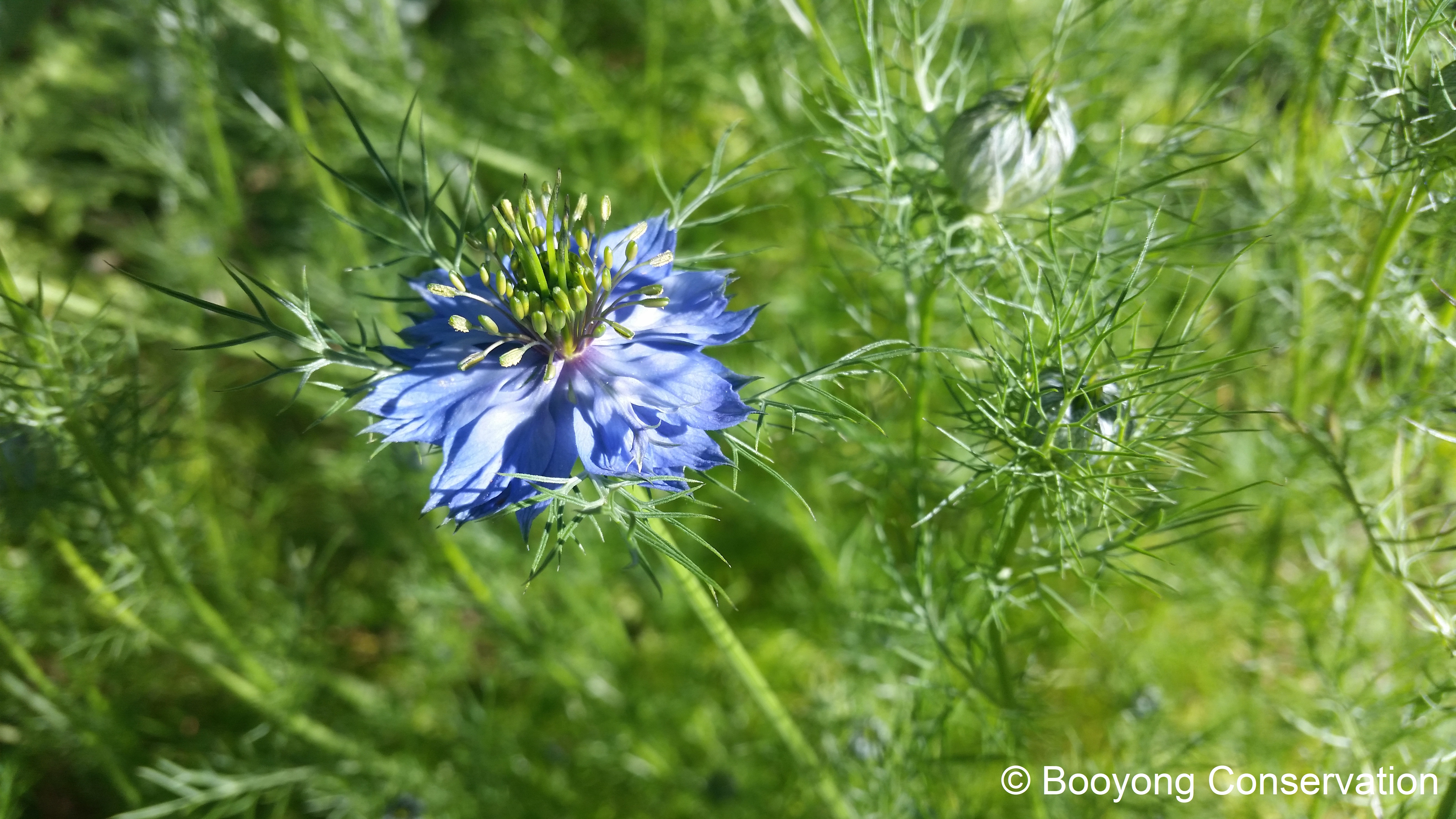This is the second year we’ve grown Nigella (Black Cumin/Nigella sativa) in our garden in Sydney – they have the most beautiful flowers (white, blue, pink and purple flowers) and lovely delicate foliage. Since they’ve come back, I thought it was time we explored what to do with them.
Growing – Nigella is an annual frost tolerant herb that likes a fertile well-drained soil in full sun or partial shade. A light fertilizer can be applied to the soil before Spring. The plants grow 20-30 cm tall and prefer a pH 6 to pH 7.
Care – Nigella plants may decline rapidly in very hot weather. The flowers will only last a few weeks, so if you want a large harvest you can succession plant from late spring to early summer.
Pruning – No Pruning required
Companion Planting – A great companion plant to Strawberries. You can also use the light texture and soft colours of nigella to break up clashes between cornflowers and calendula, which can be grown on a similar schedule.
Pests and Diseases – they don’t have any, as far as I am aware.
 Harvest – After the flowers, seed pods will begin to brown, and they can be cut off and placed in a brown paper bag until dry. Keep the seeds in a cool and dark place in an airtight container for up to 12 months.
Harvest – After the flowers, seed pods will begin to brown, and they can be cut off and placed in a brown paper bag until dry. Keep the seeds in a cool and dark place in an airtight container for up to 12 months.
Propagation – Sow seeds 30 cm apart directly in soil once the soil has reached 15 degrees and keep garden beds moist until the seeds germinate. They will come back the following year. When the seedlings self-seeded and emerged this Spring, I thought they were carrots because of their similar lacy foliage.
Health Benefits – Traditionally Nigella sees were used to treat fever, respiratory ailments, cough, headache, migraine, dizziness, infection, inflammation, rheumatism, hypertension, to gastrointestinal problems. They are high in protein (approximately 26%) and a good source of fibre, containing calcium, potassium, iron and zinc.
Eating – Nigella has a long history as both a medicinal and culinary spice and is more commonly used in Middle Eastern and Indian cuisine. Over the coming months we will explore how we can incorporate Nigella Seeds into our cooking.
The tiny black seeds have a slightly bitter taste, a little similar to onion but also some other subtle nuances of flavour. You could also add Nigella seeds as a finishing touch to rice, cous cous, lentils, chickpeas or roast vegetables or even a salad or stir fry. Nigella is said to be a lovely accompaniment to eggplant, squash and potato. They add interest to all egg dishes, and I had some on my poached eggs for breakfast this morning which was lovely. They can also be added into bread or scones.
For a stronger flavour, dry roast in a pan for 2-3 minutes or microwave the seeds before use.
Jyoti’s Savoury Chickpea Pancakes
Nigella seeds are often used as topping in Indian naan breads and we decided to add them to pancakes our friend Jyoti taught us to cook when we visited this week.
• One cup Chickpea Flour
• Coriander – finely chopped
• Tomatoes – Finely chopped
• Spices – to taste (Chilli Powder ect) and a pinch of salt
• One Tablespoon Nigella seeds
• We added one egg but you can just use water if you prefer. Just enough to get to a runny pancake consistency is required.
Mix and after you place a little oil on a hot frying pan, cook until a lovely light brown.
I imagine you could add parsley, garlic, grated zucchini and cheese. The options are endless!
We ate ours for lunch with a salad, but Jyoti said it can also be eaten on a sandwich.
Black Cumin Oil – Made from the seeds this is used for cooking and said to bring shine to hair and nails.

You must be logged in to post a comment.